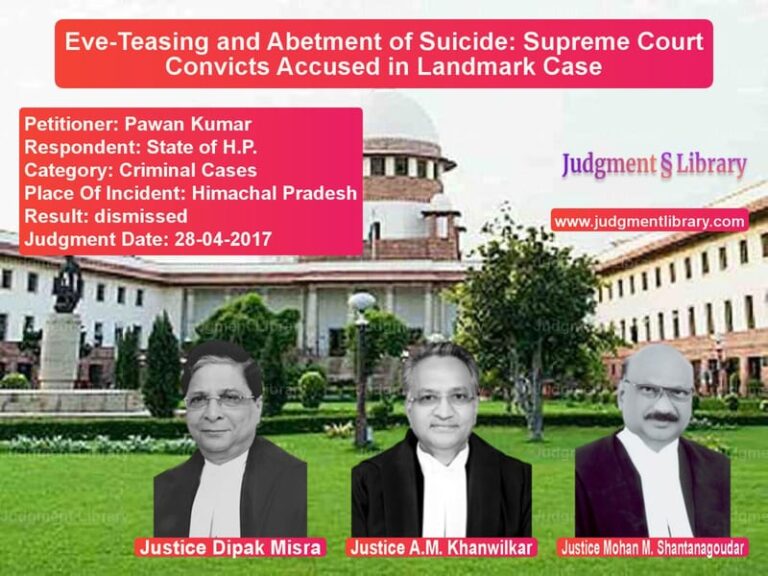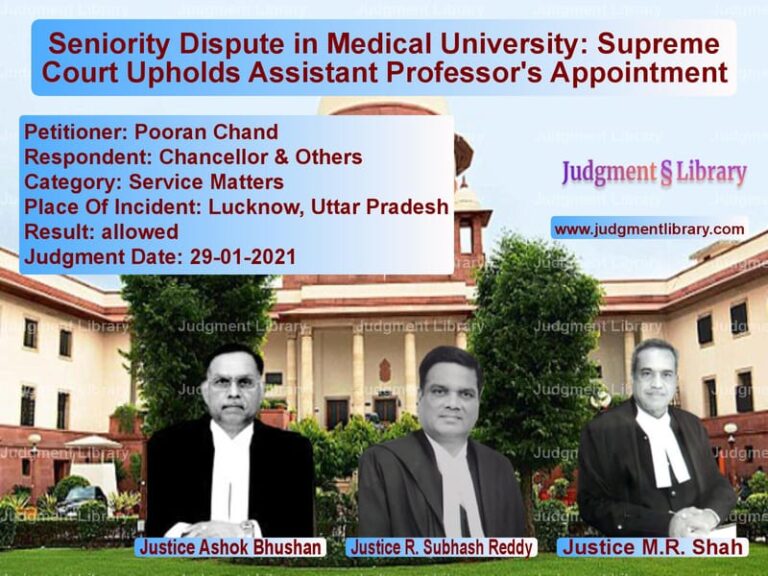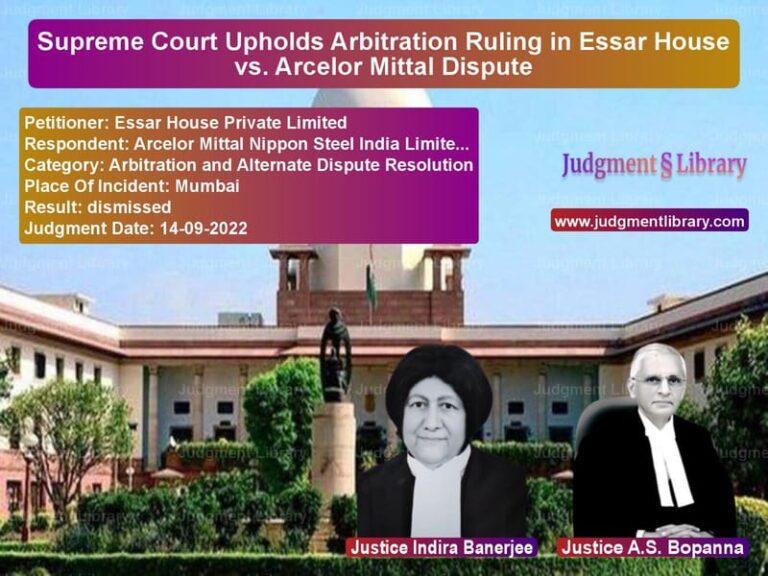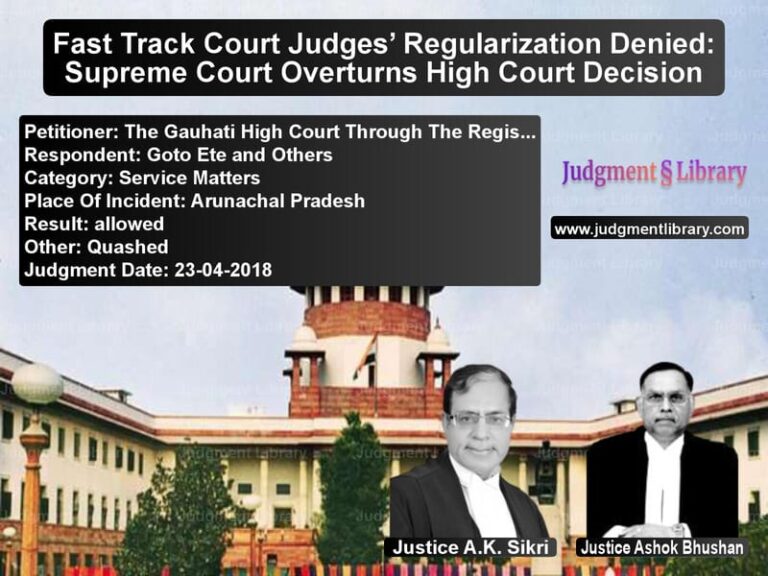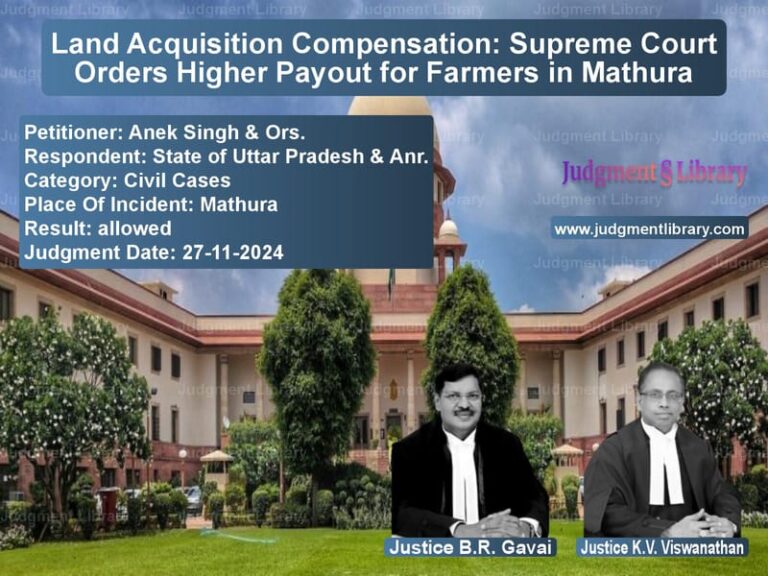Medical Oxygen and Nitrous Oxide: Supreme Court Rules on Taxation Under AP VAT Act
The case of The State of Andhra Pradesh vs. M/s Linde India Ltd. involved the taxation of Medical Oxygen IP and Nitrous Oxide IP under the Andhra Pradesh Value Added Tax Act, 2005 (AP VAT Act). The Supreme Court examined whether these gases should be taxed as ‘drugs and medicines’ under Entry 88 of Schedule IV at a lower rate or as ‘unclassified goods’ under Schedule V at a higher rate. The Court upheld the lower tax rate, ruling that these gases fall under the definition of ‘drugs’ in the Drugs and Cosmetics Act, 1940.
Background of the Case
Linde India Ltd. (formerly BOC India Ltd.), engaged in manufacturing industrial gases, Medical Oxygen IP, and Nitrous Oxide IP, was assessed for tax under the AP VAT Act. The Commercial Tax Officer demanded payment at a higher tax rate under Schedule V. The company appealed, and the Sales Tax Appellate Tribunal ruled in its favor, applying the lower tax rate under Entry 88 of Schedule IV.
The Andhra Pradesh High Court upheld this decision, relying on Inox Air Products Ltd. vs. The Assistant Commissioner (CT), Hyderabad. The state of Andhra Pradesh challenged the High Court’s ruling before the Supreme Court.
Key Legal Issues
- Whether Medical Oxygen IP and Nitrous Oxide IP are ‘drugs’ under Section 3(b)(i) of the Drugs and Cosmetics Act, 1940.
- Whether these gases qualify for the lower tax rate under Entry 88 of Schedule IV of the AP VAT Act.
- Whether they should be taxed as ‘unclassified goods’ under Schedule V at a higher rate.
Petitioner’s Arguments (State of Andhra Pradesh)
- The state argued that gases do not fall under Entry 88 as ‘similar articles’ to drugs and medicines.
- The term ‘used for or in’ in Section 3(b)(i) qualifies only ‘substances’ and not ‘medicines,’ thus excluding Medical Oxygen and Nitrous Oxide from the definition of ‘drugs.’
- Entry 100(36) of Schedule IV specifically excludes ‘medical grade oxygen,’ which indicates an intent to tax these gases under Schedule V.
- Every substance used for medicinal purposes cannot automatically be classified as a drug under Entry 88.
Respondent’s Arguments (M/s Linde India Ltd.)
- Medical Oxygen IP and Nitrous Oxide IP meet the definition of ‘drugs’ under Section 3(b)(i) of the Drugs and Cosmetics Act, 1940.
- Both gases are included in the Indian Pharmacopoeia, which prescribes standards for drugs.
- The ‘common parlance test’ supports the classification of these gases as medicines because they are widely used in medical treatments.
- High Courts in multiple states have consistently ruled that Medical Oxygen and Nitrous Oxide qualify as drugs for tax purposes.
Supreme Court’s Observations
The Supreme Court analyzed the classification of these gases under the Drugs and Cosmetics Act, 1940:
- Section 3(b)(i) defines ‘drugs’ as substances used ‘for or in’ the treatment, mitigation, or prevention of diseases.
- Medical Oxygen IP is essential in treating respiratory conditions and preventing patient deterioration.
- Nitrous Oxide IP is used as an anesthetic in surgeries.
- Medical Oxygen and Nitrous Oxide are included in the National List of Essential Medicines 2011.
The Court ruled that, given their widespread use in medical treatment, these gases fall under Entry 88 of Schedule IV.
The Court stated, “Medical Oxygen IP and Nitrous Oxide IP subserve a medicinal purpose. There is no doubt that they are drugs used in the diagnosis, treatment, mitigation, or prevention of disease.”
Final Judgment
The Supreme Court dismissed the appeals and upheld the High Court’s ruling:
- Medical Oxygen IP and Nitrous Oxide IP qualify as ‘drugs’ under Section 3(b)(i) of the Drugs and Cosmetics Act.
- These gases are subject to the lower tax rate under Entry 88 of Schedule IV.
- They cannot be classified as ‘unclassified goods’ under Schedule V.
Implications of the Judgment
This ruling has significant implications for tax law and the medical industry:
- It ensures lower tax rates for essential medical gases, making them more affordable for healthcare providers.
- It sets a precedent for the classification of substances used in medical treatments under tax laws.
- It reinforces the principle that tax classifications should align with the purpose and common usage of goods.
The judgment provides clarity on the tax treatment of medical gases and upholds the principle that items essential for medical treatment should be taxed favorably.
Petitioner Name: The State of Andhra Pradesh.Respondent Name: M/s Linde India Ltd..Judgment By: Justice Dhananjaya Y Chandrachud, Justice Ajay Rastogi.Place Of Incident: Andhra Pradesh.Judgment Date: 13-04-2020.
Don’t miss out on the full details! Download the complete judgment in PDF format below and gain valuable insights instantly!
Download Judgment: The State of Andhra vs Ms Linde India Ltd. Supreme Court of India Judgment Dated 13-04-2020.pdf
Direct Downlaod Judgment: Direct downlaod this Judgment
See all petitions in Income Tax Disputes
See all petitions in Tax Evasion Cases
See all petitions in Banking Regulations
See all petitions in Judgment by Dhananjaya Y Chandrachud
See all petitions in Judgment by Ajay Rastogi
See all petitions in dismissed
See all petitions in supreme court of India judgments April 2020
See all petitions in 2020 judgments
See all posts in Taxation and Financial Cases Category
See all allowed petitions in Taxation and Financial Cases Category
See all Dismissed petitions in Taxation and Financial Cases Category
See all partially allowed petitions in Taxation and Financial Cases Category



